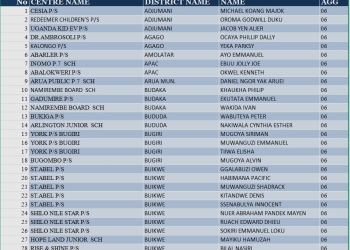
KAMPALA, Uganda — Most rural households in Uganda, heavily reliant on agriculture, lack formal insurance against risks like crop failure and price shocks, according to a recent study. Researchers suggest that awareness programs, potentially using simulations or testimonials from peers who have experienced losses, could significantly increase the adoption of formal insurance among these farmers.
The findings come from a study by researchers A. Nanyiti and H. Pamuk, published in the Journal of African Economies. It highlights that only 1% of Ugandan adults have formal insurance coverage, despite 67% of households depending on agriculture for their livelihoods. Poor households in low-income countries are particularly vulnerable to shocks, with limited savings and assets to mitigate devastating consequences.
While informal risk-sharing networks like savings and loan associations and peer-to-peer transfers are common, the study confirms these provide incomplete coverage against income and consumption shortfalls. Formal insurance, offered by registered companies, requires premiums but offers payouts in the event of adverse outcomes.
The researchers used a “real effort task experiment” with Ugandan smallholder farmers to compare behavior under formal and informal insurance arrangements. Their findings revealed that farmers exerted less effort when relying on informal insurance but maintained productivity under formal coverage. Notably, farmers who experienced a bad outcome increased their formal insurance coverage in subsequent rounds, suggesting that direct experience with risk can drive demand for insurance.
“Our findings illuminate the complex relationship between insurance mechanisms and economic behavior in rural Uganda,” the researchers stated. “Most notably, we find that farmers exerted less effort under informal insurance arrangements but maintained their effort levels under formal insurance.”
They emphasized that this “learning process indicates that first-hand experience with risk may be a powerful driver of insurance demand.”
These results have significant policy implications for agricultural development in low-income countries. The researchers conclude that awareness programs effectively demonstrating potential negative outcomes — perhaps through simulations or peer testimonials — could make risks more tangible and understandable, leading to higher uptake of formal insurance. They advocate for financial education that goes beyond traditional information campaigns to address both economic and behavioral factors influencing insurance decisions.
Editor’s Note: This column is published in collaboration with the International Economic Association’s Women in Leadership in Economics initiative, which aims to enhance the role of women in economics through research, building partnerships, and amplifying voices.

















